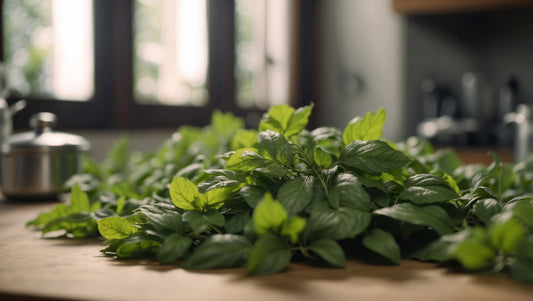by Dr. Laurie Dohmen, VMD, MS, RH (AHG)
Summer is the season of travel! School is out, national parks are open, the air is warm, and there is so much to do and see in the summer. In Ayurveda, traveling is considered primarily a vata activity. Vata translates to “that which moves” and traveling certainly counts! Other attributes of vata include: pleasure, excitation, variety, action, and socialization. It is fun to travel to loved ones and socialize with people we don’t see frequently or plan an active vacation, like hiking or kayaking.
However, excess vata can lead to nervousness, fear, and also digestive issues. This is the wisdom of Ayurveda, which has found correlations between excessive vata inputs such as activities or foods, and its impacts with the body, mind, and spirit. As for humans, the same goes for our furry friends.
In the veterinary world, we see so many dogs that experience stress colitis, which manifests commonly as explosive diarrhea. We also see nervous behaviors, such as inappropriate urination or chewing unacceptable items such as sofas, shoes, and blankets. We especially see this when dogs are boarded when their family is traveling without them. When you think about it, going to the kennel is still travel and movement for the pet, and can thus be considered adding vata to the pet’s system. We also may see digestive upset or just obvious fear behavior even when our companion animals accompany us on our trips. Those cute social media videos of cats riding motorcycles or hiking around the world get posted on social media because they are so rare. Most animals do not like to have their schedules disrupted, and vacation certainly is a disruption!
So how do we prevent and manage this overabundance of vata? We lean into its opposite: kapha. Kapha means “that which brings cohesion” and its attributes include: stability, groundedness, calmness, dependability and steadiness. To a certain extent, we all need this for mental and physical health. As with people, some animals need this more than others. We have a Norwegian Elkhound on our farm, and she sees protecting the farm as her full-time job. Since she is an elkhound, her innate desire is to herd, and here she herds and protects the goats, horses, ducks and any other creatures that will let her! When she gets in a car, she has motion sickness, and even when she arrives at our vacation home, she is unsettled and chews blankets until we return to the farm. As a more kapha pet, she is especially sensitive to excess vata such as travel.
And yet, we still need to be able to travel and move! So there are foods and herbs that are considered kapha that can thus help balance vata activities. In Ayurveda, everything is connected, so the activities that influence our energies can be tempered by the foods that we eat, and even the thoughts that we think. The primary food groups that are kapha include meat, dairy, nuts and carbohydrates (no wonder we love these groups so much, they are grounding and steady!). So it’s okay to feed your dog a few extra pizza crusts or some peanut butter or yogurt when you are away (as long as they don’t have a contraindicated condition). Another option is to add herbs to your pet’s diet. There are a variety of herbs that balance vata, including ajwain (Trachyspermum ammi), ashwagandha (Withania somnifera), and haritaki (Terminalia chebula).
Ajwain is a seed with a flavor reminiscent of oregano. It is a common culinary herb in India. It is used in Ayurveda to support the digestive tract in times of upset 1. This is a nice choice to support those pets that tend to show gastrointestinal signs with travel. It is important to note that ajwain is not safe for pregnant females or in any creature with liver disease2. Since it is a culinary herb, it is easy just to sprinkle some seeds into your animal’s food.
Ashwagandha is also known as winter cherry in the USA. In their book, Khalsa and Tierra (2008) tell a story of a woman who took ashwagandha and overcame her nervousness going out in public. They also reference studies on its use for stress, nervousness, and occasional difficulty falling asleep, all of these are vata conditions and these conditions often brought on by travel for both humans and our companion animals. In fact, they say “Ayurveda considers it [ashwagandha] a ‘grounding’ herb one that nourishes”3. Nourishment, as stated above, increases kapha, which in turn balances vata. Ashwagandha is commonly used in the Ayurvedic tradition to support nervous exhaustion4. It is also believed to support the body in its resistance to stress and fatigue secondary to an over-stressed system.5 It is an extremely safe herb, and very palatable for our companion animals. It is also easy to find in capsules or liquid extracts.
Haritaki is one of the fruits in the classic Ayurvedic herbal formula known as triphala (three fruits). Haritaki is considered “the best single herb for generally controlling vata”.3 It is considered “The King of Medicines”.6,7,8 It is thought to promote fearlessness 9 and fear is certainly part of what our companion animals experience when they travel or are kenneled. Dr. Tejinder Sodhi, an Ayurvedic veterinarian, states that haritaki “is an important supplement for people [or animals] who travel”.10 It is “traditionally used as a remedy for all vata disturbances.”8 The sour flavor in haritaki is what specifically balances vata 11. It breaks down waste material (mala) to aid with normal digestive function11. To balance vata, haritaki is best administered with ghee (clarified butter).7 Haritaki is another herb that is very safe except in pregnancy or wasting diseases (if your animal is truly ill, please don’t take them on vacation anyway!). It is most commonly found in triphala, which is a great herb combination and an excellent way to use haritaki. Triphala can be administered as a powder in ghee for the best vata support. Even if it is purchased in capsules, just open the capsule and stir the powder into a teaspoon or so of ghee.
Remember, as with anything in Ayuveda, balance is essential! It can be useful to think about balancing vata activities so as to avoid any unwanted imbalances. As they say, an ounce of prevention is worth a pound of cure. So have a wonderful summer, full of adventure, travel and movement. Remember to support your pets and yourselves with substantive nourishing foods and vata supportive herbs! This way, you and your pets will be sure to get the most out of this wonderful season.
Dr. Laurie Dohmen, vmd, ms, rh (ahg)
purple moon herbs and studies
www.purplemoonherbstudies.com
drlaurie@purplemoonherbstudies.com
References:
- Ayurvedic Significance of World's Ancient Spice, Trachyspermum ammi Linn. (Ajwain). Gover, M. 4, International Research Journal of Pharmacy and Medical Sciences, Vol. 4, pp. 30-36.
- Trachyspermum ammi: A Review on Traditional and Modern Pharmacological Aspects. Goyal, S, et al. 4, 2022, Biological Sciences, Vol. 2, pp. 324-337.
- Khalsa, K. P. S. and Tierra, Michael. The Way of the Ayurvedic Herbs. Twin Lakes, WI : Lotus Press, 2011.
- Healthcare and Disease Management in Ayurveda. Mishra, L, Singh, B and Dagenais, S. 2, 2001, Alternative Therapies in Health and Medicine, Vol. 7, pp. 44-50.
- Withania somnifera (L.) Dunal - Modern Perspectives of an Ancient Rasayan from Ayurveda. Mukherjee, P, et al. 2021, Journal of Ethnopharmacology, Vol. 264, p. 113157.
- Ayurvedic and Modern Aspect of Terminalia chebula Retz. Haritaki An Overview. Dodke, P and Pansare, T. 2, 2017, International Journal of Ayurvedic and Herbal Medicine, Vol. 7, pp. 2508-2517.
- Biological and Pharmacological Properties of Terminalia chebula Retz. (Haritaki) - An Overview. Gupta, P. Suppl. 3, 2012, International Journal of Pharmacy and Pharmaceutical Sciences, Vol. 4, pp. 62-68.
- Clinical Application of Haritaki (Terminalia chebula Retz.) in Ayurveda. Anand, P and Patel, B. International Journal for Multidisciplinary Research.
- Williamson, E. Major Herbs of Ayurveda. Edinburgh : Churchill Livingstone, 2002.
- Sodhi, Virender. Ayurvedic Herbs. Bothell, WA : Book Publishers Network, 2014.
- Pharmacological Profile of Terminalia chebula Retz. and Willd. (Haritaki) in Ayurveda with Evidences. Meher, S, et al. 3, 2018, Research Journal of Pharmacology and Pharmacodynamics, Vol. 10, pp. 115-124.




